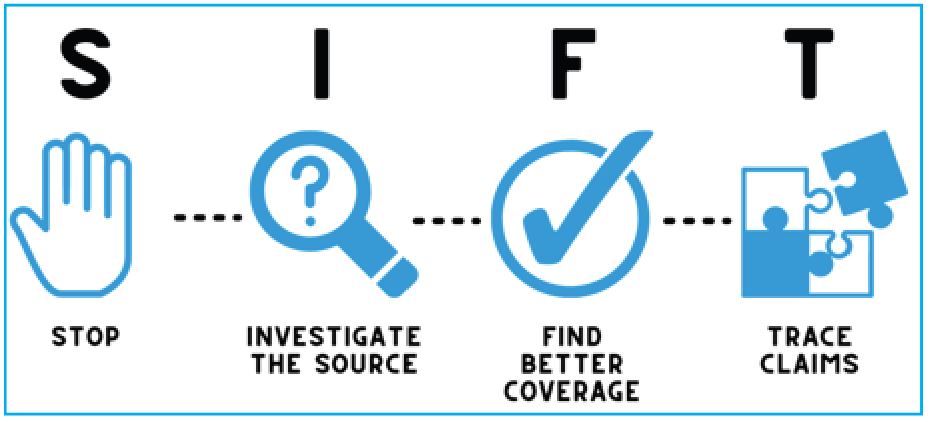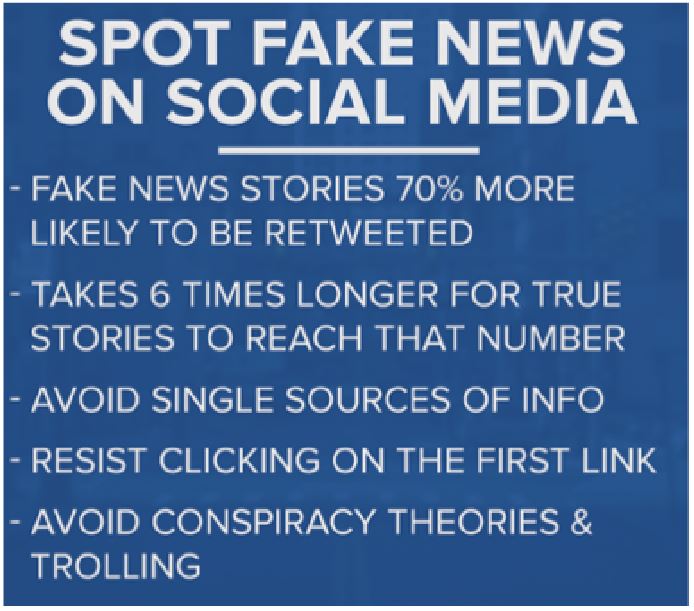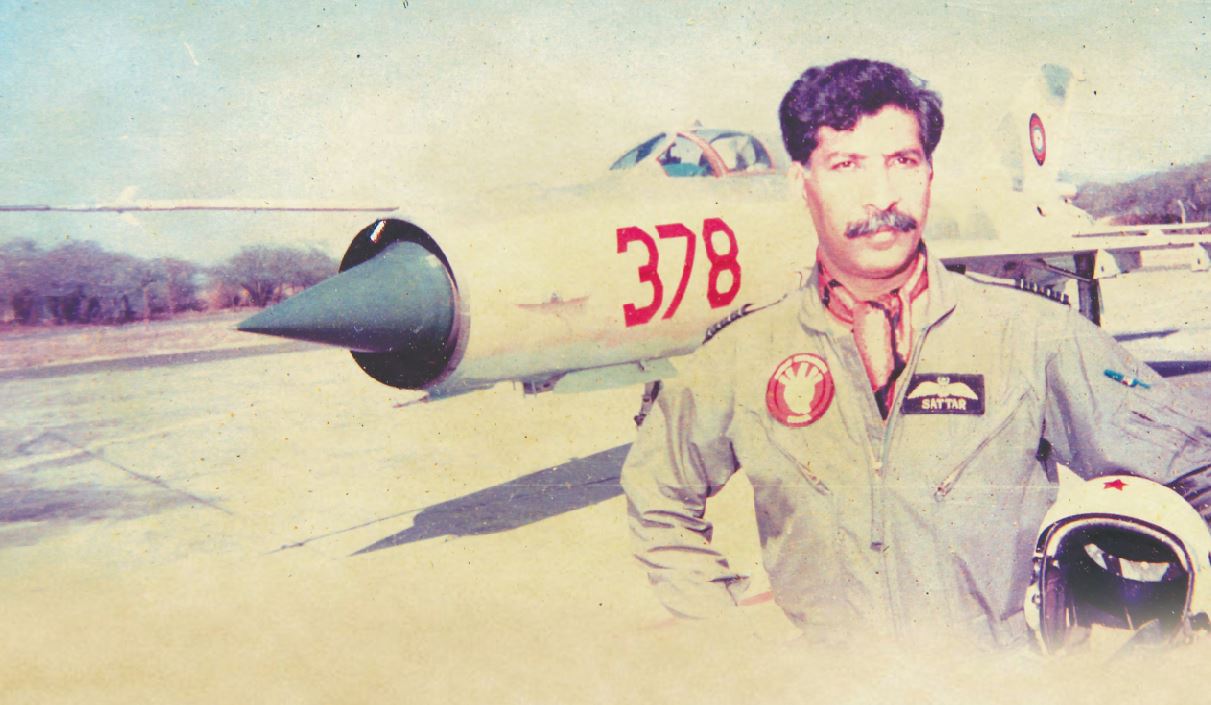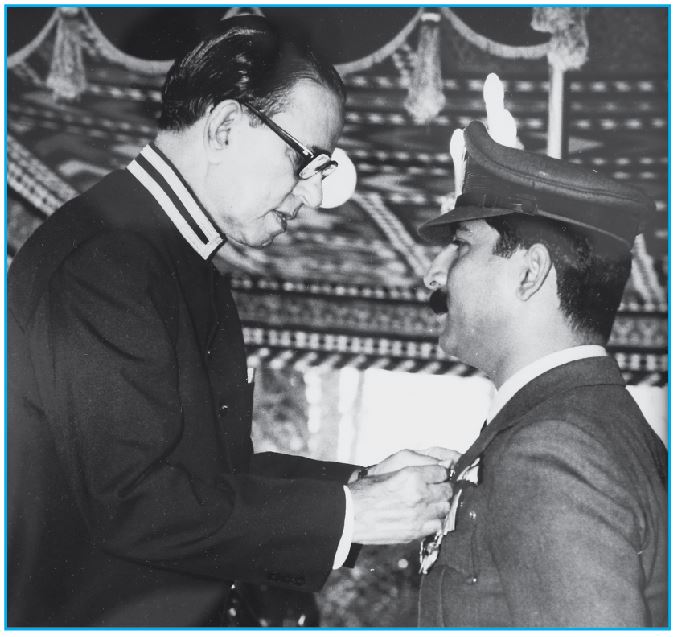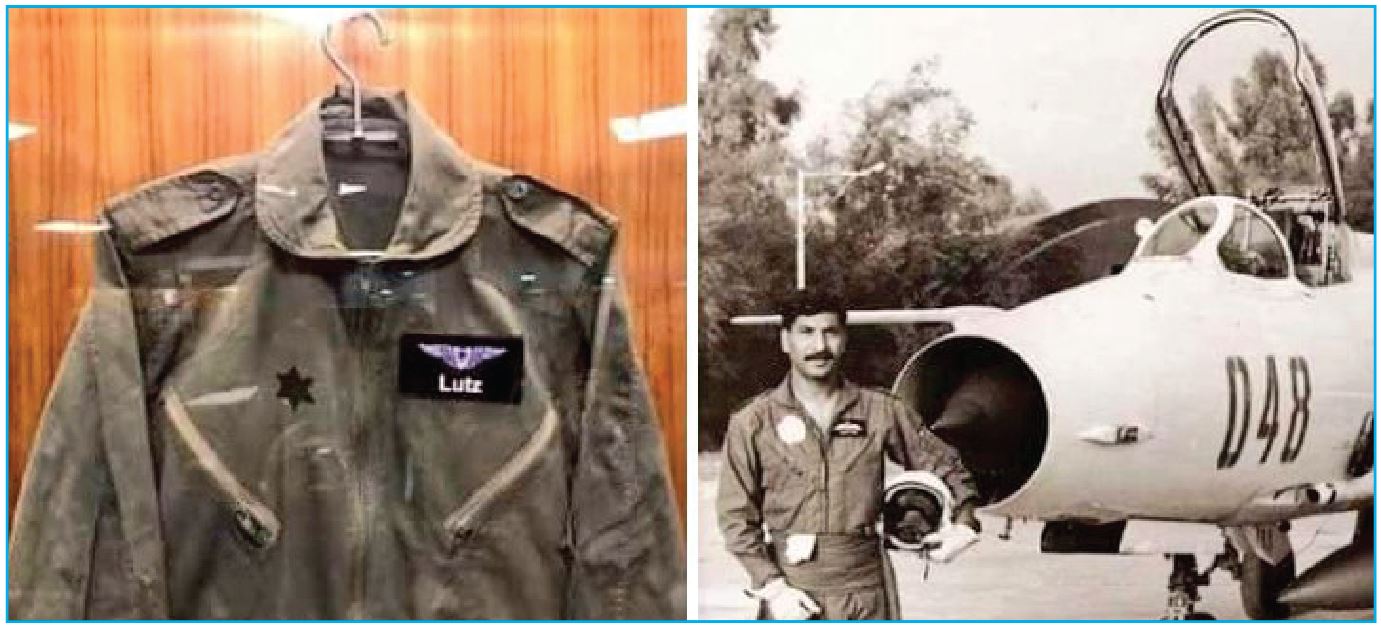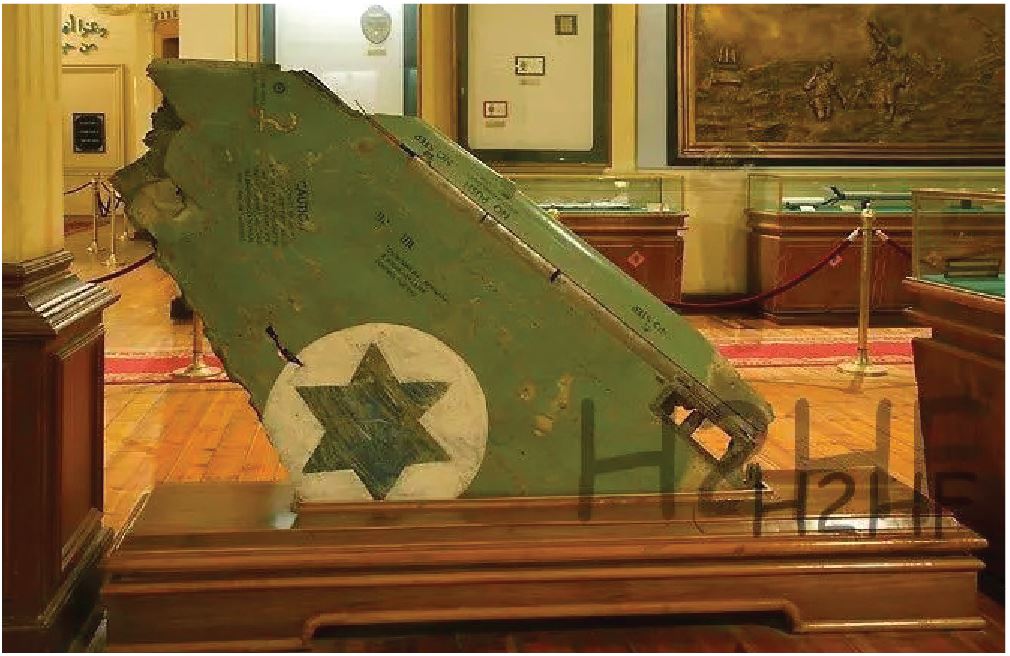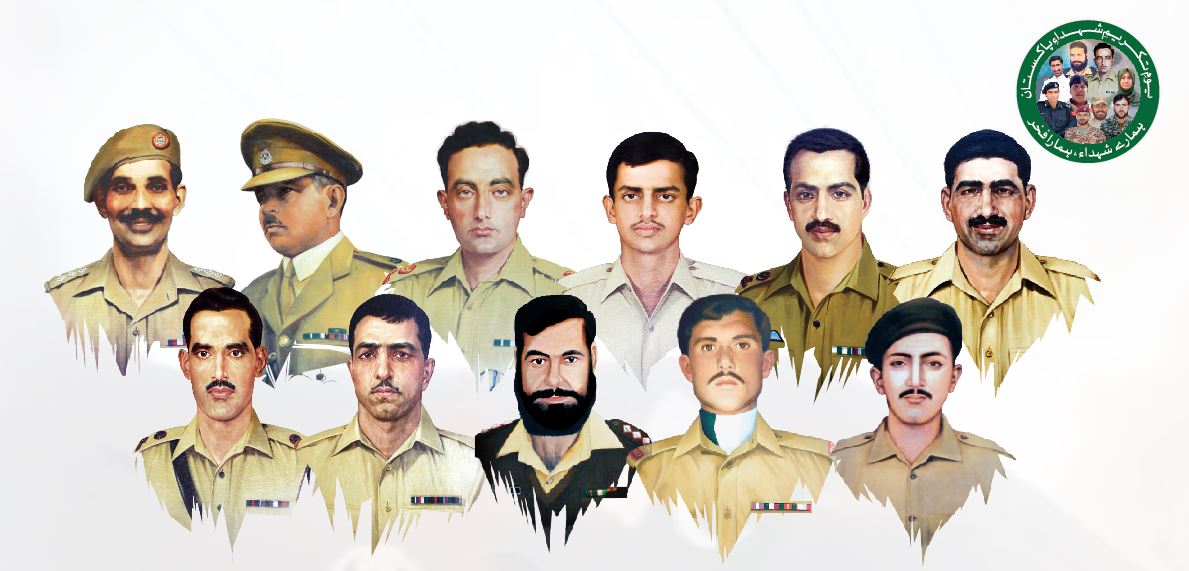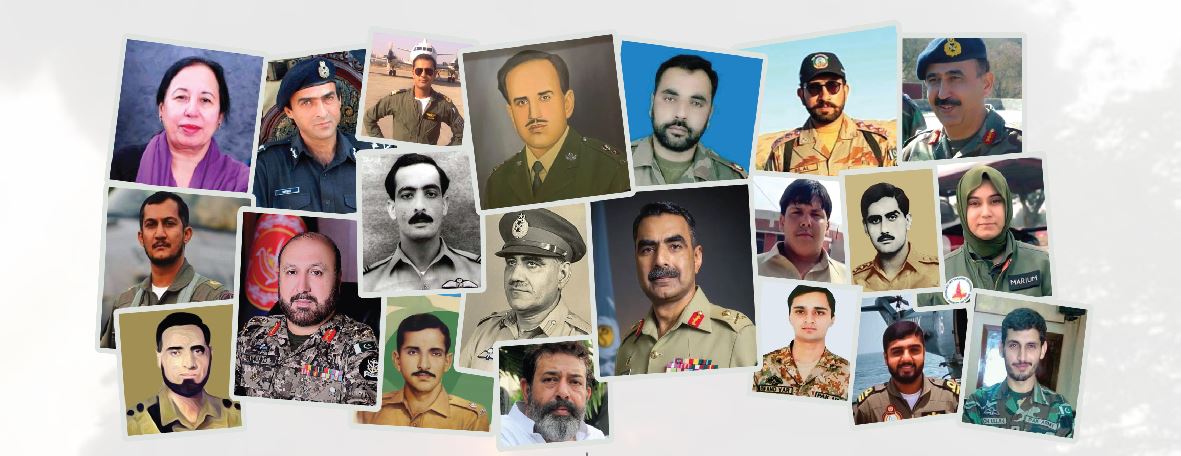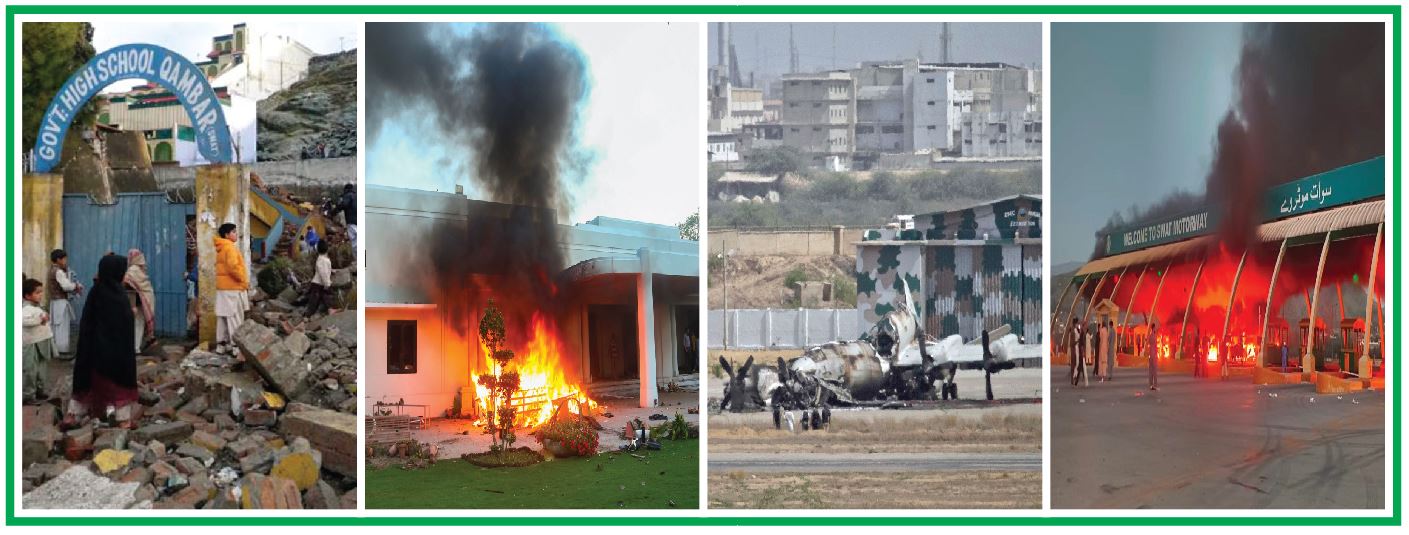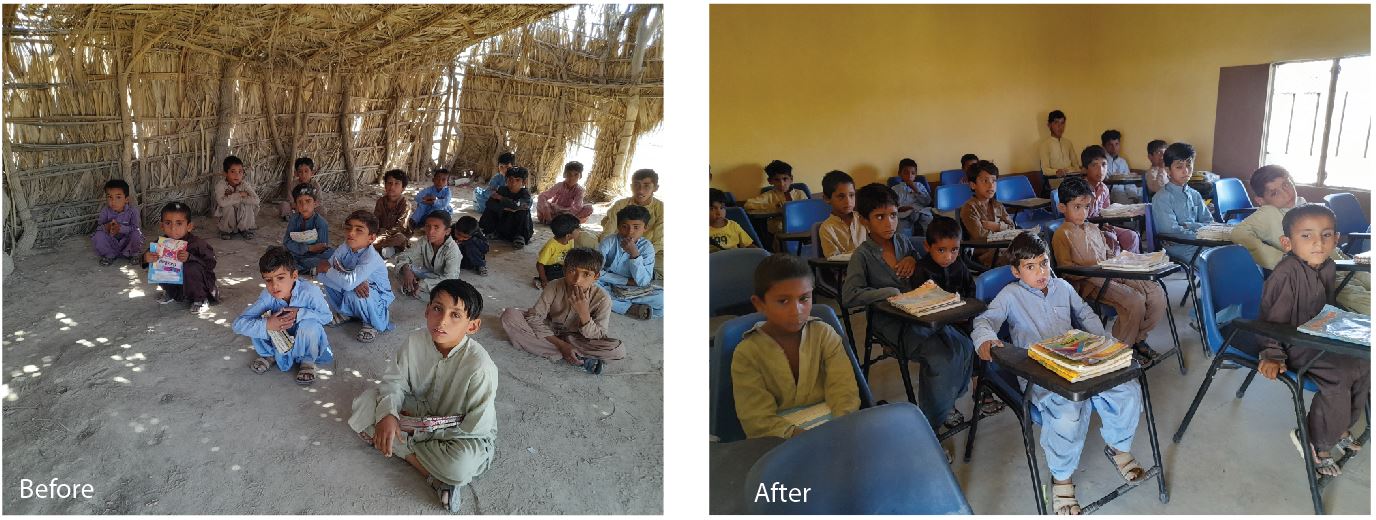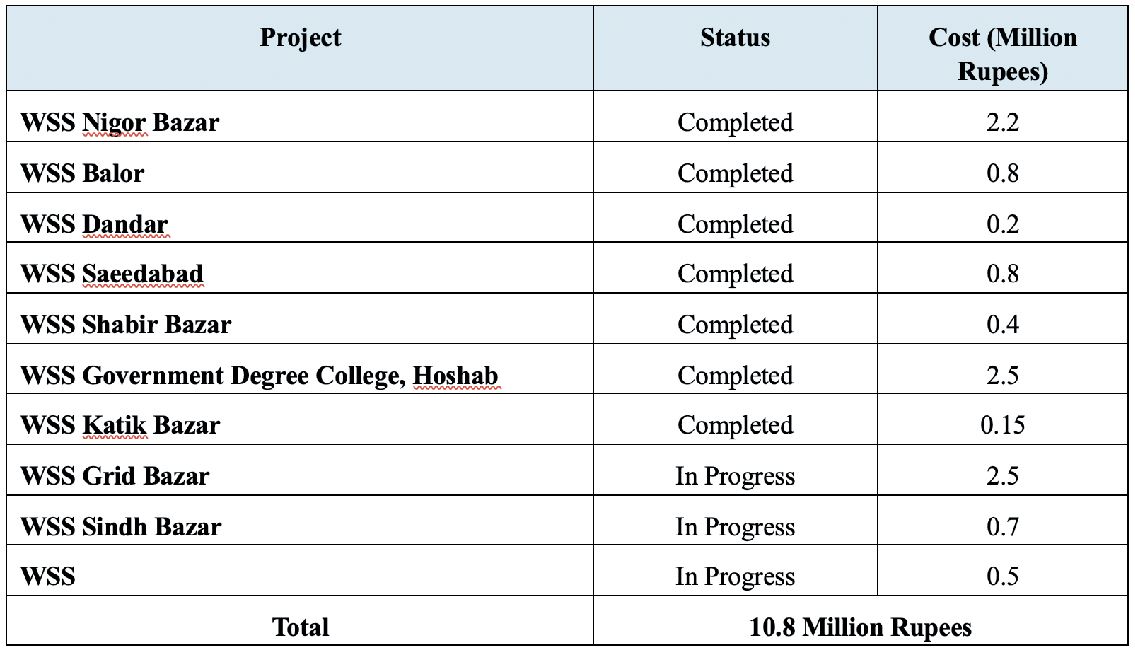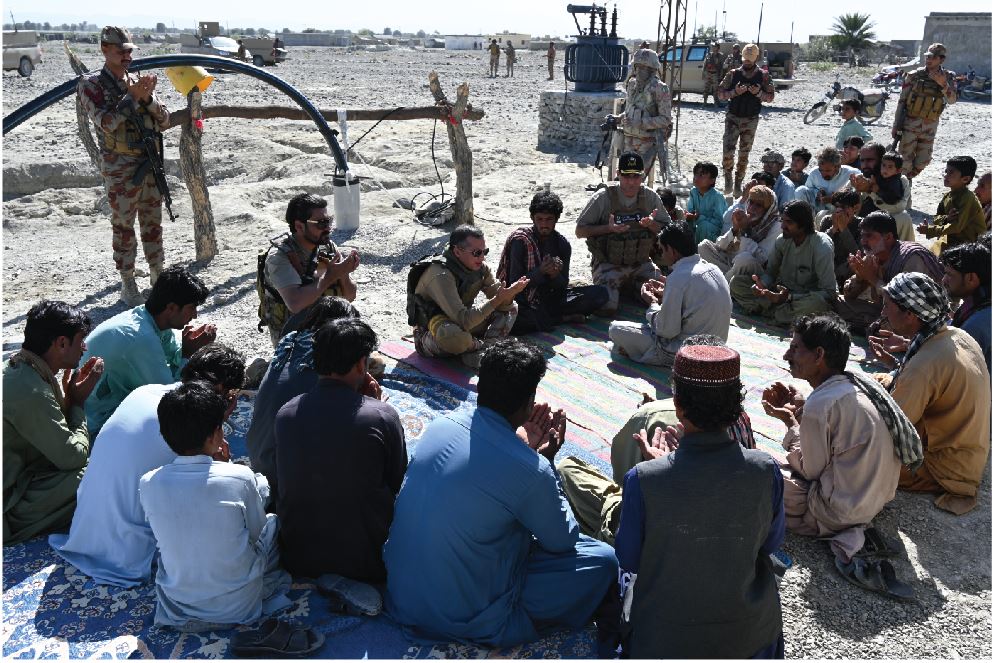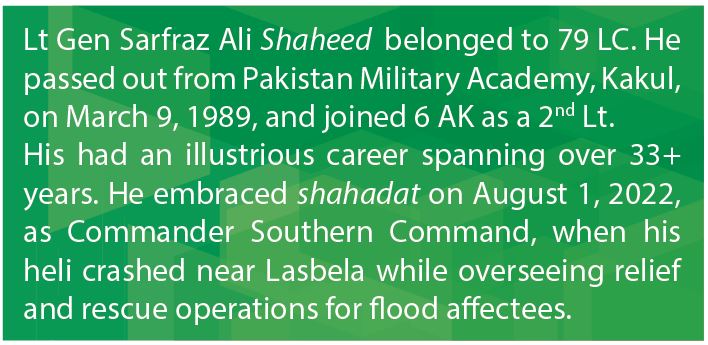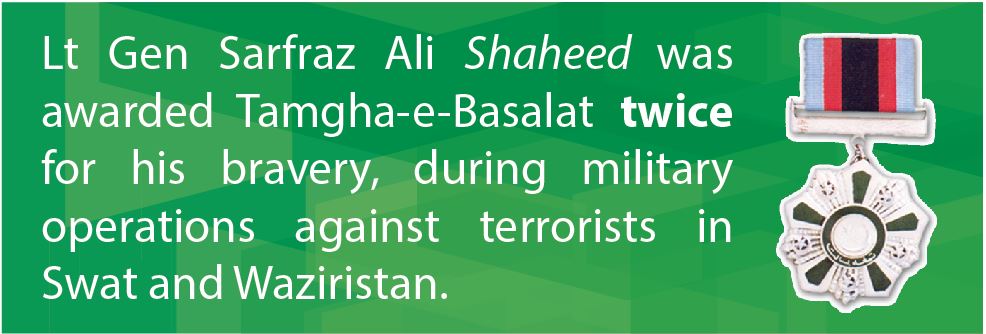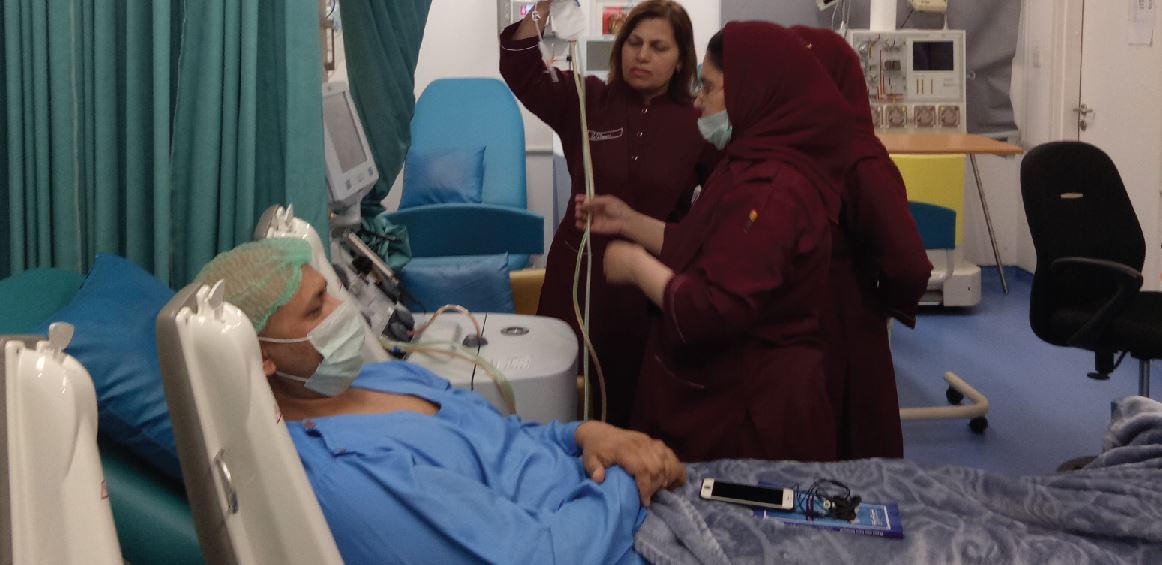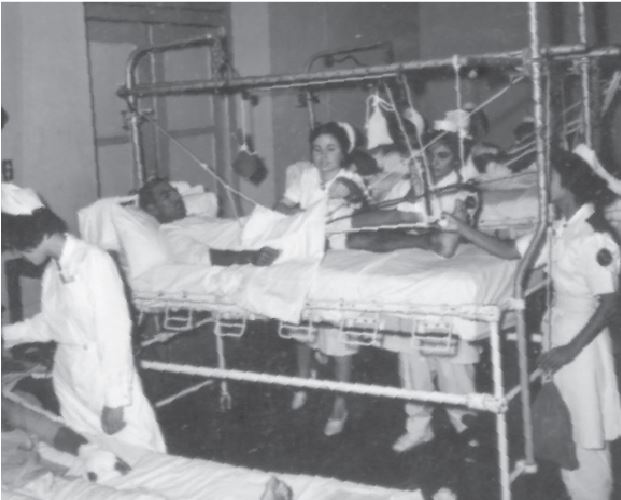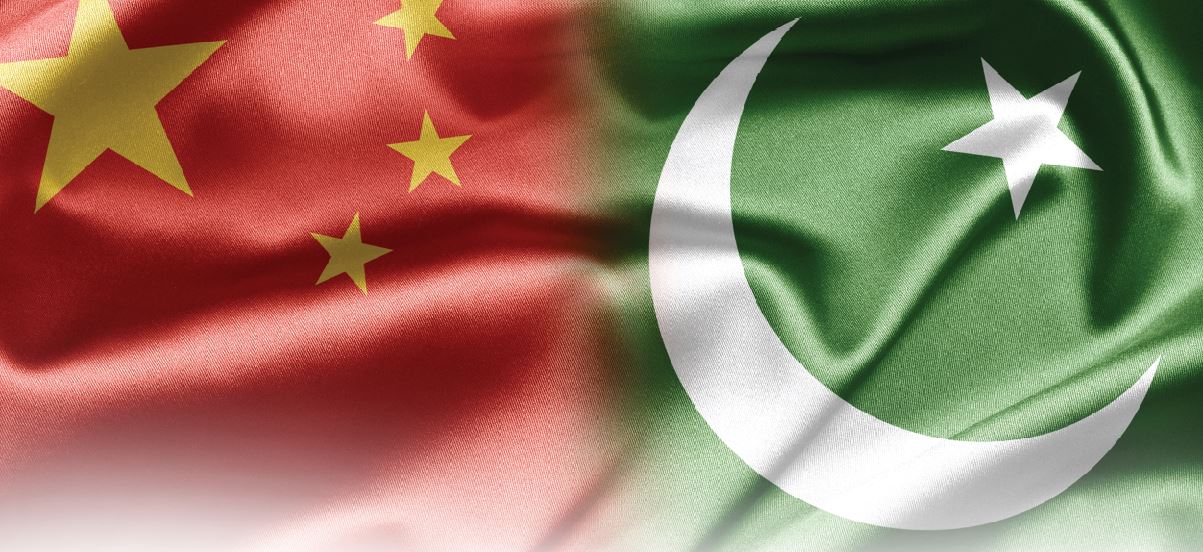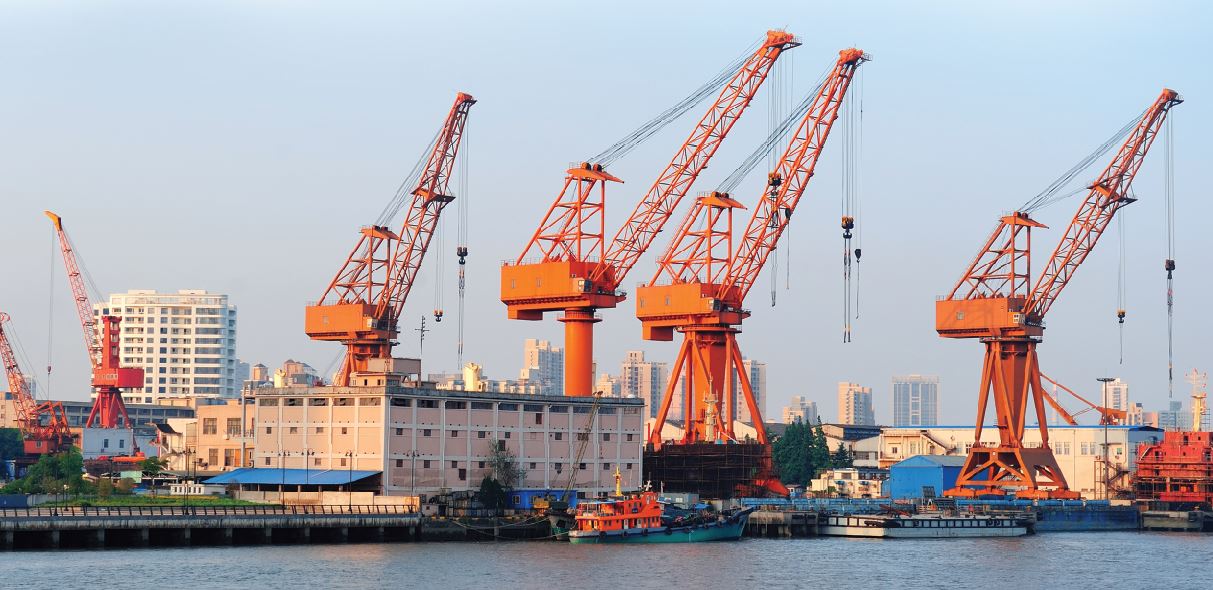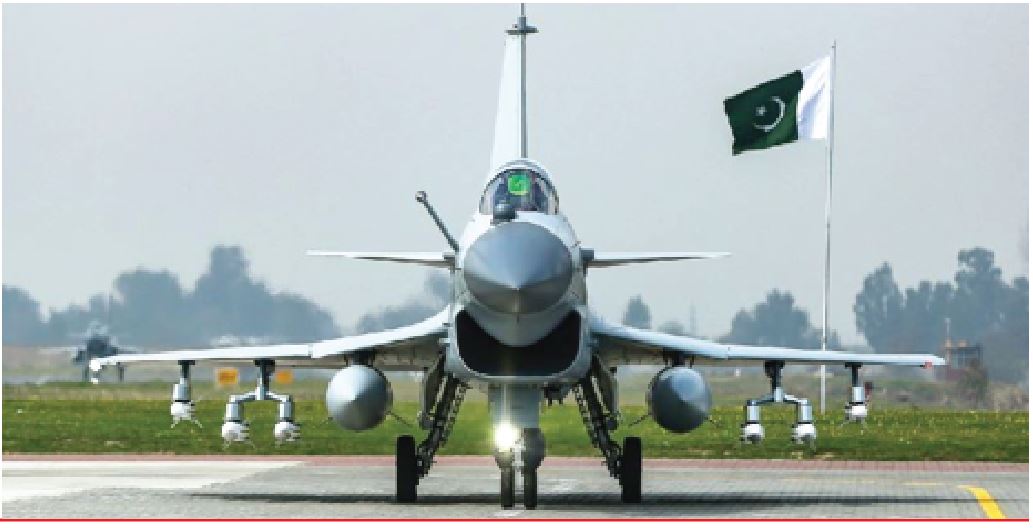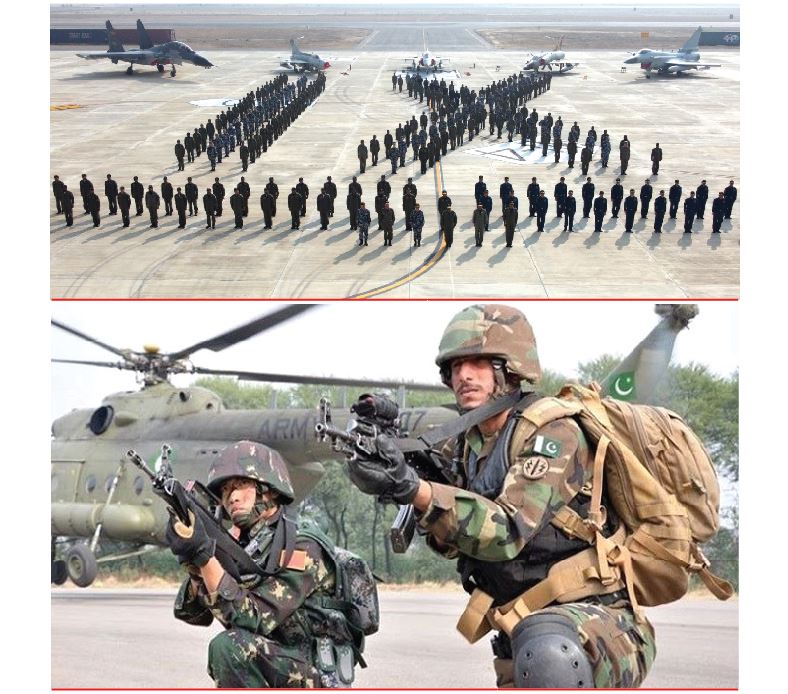Pakistan Ka Beta
SENIOR MEMBER

- Joined
- Aug 7, 2019
- Messages
- 3,490
- Reaction score
- 9
- Country
- Location
Hilal is a monthly bilingual magazine of the Pakistan Armed Forces with a long and rich history dating back to 1948.
"Education is the most powerful weapon which you can use to change the world.
–Nelson Mandela

The establishment of cadet colleges in Khyber Pakhtunkhwa (KP) has brought significant transformation in the education system of the region. The cadet colleges have not only provided quality education to the students, but also contributed to the development of the region in terms of economic stability, preparation of youth as responsible citizens, and transformation through education. This article explores the importance and impact of cadet colleges in KP and the tribal areas. KP has been affected by terrorism and militancy for a long time, which had a significant impact on the education system of the area. Cadet colleges were introduced as a solution to this problem, with a focus on providing quality education and shaping the character and values of young students, preparing them to become responsible and contributing members of the society.
These cadet colleges have not only succeeded in providing a platform for education, but have also played a significant role in nation-building among the students. The establishment of cadet colleges has also contributed to the development of the region's economy by creating job opportunities for the locals and promoting a positive image of the area. Cadet colleges in KP, such as Cadet College Kohat, Garrison Cadet College Kohat, Cadet College Warsak, Cadet College Razmak, Karnal Sher Khan Cadet College Swabi, Cadet College Swat, Cadet College Mohmand, Cadet College Spinkai, Cadet College Wana and Girl's Cadet College Mardan, are significant institutions that have promoted discipline, leadership, and patriotism among students, which are crucial for the country's progress. In addition, these institutions are empowering females in the region, with a particular focus on Girl's Cadet College Mardan. Overall, it is important to highlight the pivotal role these cadet colleges are playing in transforming the future of KP and Pakistan by providing quality education, creating job opportunities, and preparing the youth to become responsible citizens.
Cadet College Kohat. Founded in 1964 and situated on the outskirts of Kohat in KP, it is an esteemed educational institution known for providing quality education to students from grade 8th to 12th, solely on merit and competition. As one of the top elite institutions in the country, it caters to all segments of society, aiming to produce leaders and responsible citizens who can contribute positively to the society. Through its rigorous academic and co-curricular programs, the college strives to instil discipline, foster leadership qualities, and develop a sense of responsibility in its students. Consequently, Cadet College Kohat has produced a myriad of distinguished individuals who have excelled in various fields, rendering invaluable contributions to the development of the country. It is thus widely recognized as a crucial institution in the process of nation-building, not only in KP but also beyond.

Garrison Cadet College Kohat. Located in the suburbs of Kohat city, it is one of the oldest cadet colleges in KP, established in 1965. The college has produced many notable alumni, including former Chief Secretary KP, Dr. Shehzad Khan. He believes that his life as a cadet made him more disciplined and groomed his personality, leading him to the position of Chief Secretary, KP. The college has a history of producing quality education and remarkable individuals.
Cadet College Warsak. Located in the suburbs of Peshawar and established in 1974, the college focuses on academic excellence, character building, and leadership skills. With a well-qualified faculty and a well-equipped campus, the college has also nurtured and produced numerous notable alumni who are serving the country in various fields.
Cadet College Razmak. It is the first-ever cadet college established in the tribal areas of KP. The college was established in 1978 and has been providing quality education to the students of the area. The college boasts a highly qualified faculty and state-of-the-art facilities to provide its students with a conducive learning environment. Additionally, the college emphasizes the importance of extracurricular activities, allowing students to develop their skills beyond academics. The college has a rich history of producing distinguished alumni who have achieved success in various spheres of life.

Karnal Sher Khan Cadet College, Swabi. The college was established in 2002 in memory of Captain Karnal Sher Khan, who embraced martyrdom in the Kargil War. The college aims to provide quality education and training to the students, preparing them for the future challenges. The college has modern facilities, including well-equipped labs, a library, and sports facilities. Moreover, the college offers various extracurricular activities to enhance the students' skills and abilities. The college has produced many notable alumni who have made their mark in different fields of life.
Cadet College Swat. It was established in 2011, and since then, it has been providing quality education to the students. The college is known for its focus on character building, academic excellence, and leadership skills. The college has a qualified faculty and a well-equipped campus. The college provides opportunities for its students to participate in a range of extracurricular activities, aimed at developing their skills and abilities. Furthermore, the college has a track record of producing distinguished alumni who have made significant contributions to the country in different domains.

Cadet College Mohmand. It is a relatively new addition to the cadet colleges in KP. Established in 2013, the primary objective of the college is to impart high-quality education to the students and equip them with the necessary skills to overcome future challenges. The college has a modern infrastructure, fully assembled labs, and sports facilities. Additionally, the college provides a range of extracurricular activities that serve to develop the skills and abilities of its students.
Cadet College Spinkai. The college is located in South Waziristan, one of the areas most affected by terrorism and militancy. The college was established in 2014, with the aim of providing quality education to the students of the area. The college has made a significant contribution to the education sector, providing a ray of hope to the children of the region. The college boasts a competent faculty and top-notch infrastructure, providing ample opportunities for the students to engage in extracurricular activities and hone their skills.

Cadet College Wana. It is located in South Waziristan, one of the areas most affected by terrorism and militancy. The college was established in 2015, with the aim of providing quality education to the students of the area. In addition to its well-qualified faculty and modern facilities, the college also provides students with opportunities for extracurricular activities that foster skill-building and personal growth.
Girl's Cadet College Mardan. Established in 2016, the college is empowering 200 girls, which is a great example of how cadet colleges are enhancing the role of females in KP and Pakistan. The college has overseas students from various countries, including the Kingdom of Saudi Arabia (KSA), the United Arab Emirates (UAE), the United Kingdom, Canada, Australia, and Japan. Education is the biggest asset any country can have, and investing in female education is particularly important as it promotes gender equality and empowers women to play a more significant role in the society. The Girl's Cadet College Mardan is providing girls with quality education and preparing them for a brighter future, not only for themselves but also for their families, communities, and the nation as a whole.

The establishment of cadet colleges in KP and the adjoining tribal areas has contributed greatly to the development of the region by promoting education and reducing terrorism. The local elders believe that militancy in the area affected education the most, but the establishment of cadet colleges has given hope to the children in the region. Presently, 5000 students are enrolled in cadet colleges, providing them with quality education and giving the locals hope for a brighter future.
Cadet colleges play a crucial role in shaping the future of a nation by providing quality education and instilling discipline in the youth. By promoting education, cadet colleges not only contribute to nation-building, but also help in curbing the menace of terrorism and leading the country towards economic stability and solidarity. As Malcolm X said, education is the passport to the future, and cadet colleges are playing a vital role in paving the way for a better tomorrow, "Education is the passport to the future, for tomorrow belongs to those who prepare for it today."
Establishing cadet colleges in the remote areas of KP has proven to be a stepping stone towards peace, prosperity, and a successful future for Pakistan. Cadet colleges are playing a vital role in shaping the future of the country by instilling a sense of responsibility and discipline in the youth. These institutions are not only imparting quality education, but also contributing to the socioeconomic development of the region. By promoting leadership, patriotism, and values, cadet colleges are nurturing a generation of responsible citizens who will lead the country towards progress and prosperity.
The writer is a member of staff.
E-mail: [email protected]

 www.facebook.com
www.facebook.com
# Twitter handle of Hilal Publications started recently so i would request Mods to Pin this thread and other members to follow it on Twitter while facebook link is also mentioned . Thanks .
Cadet Colleges in KP: Strengthening the Foundation of Nation Building
"Education is the most powerful weapon which you can use to change the world.
–Nelson Mandela

The establishment of cadet colleges in Khyber Pakhtunkhwa (KP) has brought significant transformation in the education system of the region. The cadet colleges have not only provided quality education to the students, but also contributed to the development of the region in terms of economic stability, preparation of youth as responsible citizens, and transformation through education. This article explores the importance and impact of cadet colleges in KP and the tribal areas. KP has been affected by terrorism and militancy for a long time, which had a significant impact on the education system of the area. Cadet colleges were introduced as a solution to this problem, with a focus on providing quality education and shaping the character and values of young students, preparing them to become responsible and contributing members of the society.
These cadet colleges have not only succeeded in providing a platform for education, but have also played a significant role in nation-building among the students. The establishment of cadet colleges has also contributed to the development of the region's economy by creating job opportunities for the locals and promoting a positive image of the area. Cadet colleges in KP, such as Cadet College Kohat, Garrison Cadet College Kohat, Cadet College Warsak, Cadet College Razmak, Karnal Sher Khan Cadet College Swabi, Cadet College Swat, Cadet College Mohmand, Cadet College Spinkai, Cadet College Wana and Girl's Cadet College Mardan, are significant institutions that have promoted discipline, leadership, and patriotism among students, which are crucial for the country's progress. In addition, these institutions are empowering females in the region, with a particular focus on Girl's Cadet College Mardan. Overall, it is important to highlight the pivotal role these cadet colleges are playing in transforming the future of KP and Pakistan by providing quality education, creating job opportunities, and preparing the youth to become responsible citizens.
Cadet College Kohat. Founded in 1964 and situated on the outskirts of Kohat in KP, it is an esteemed educational institution known for providing quality education to students from grade 8th to 12th, solely on merit and competition. As one of the top elite institutions in the country, it caters to all segments of society, aiming to produce leaders and responsible citizens who can contribute positively to the society. Through its rigorous academic and co-curricular programs, the college strives to instil discipline, foster leadership qualities, and develop a sense of responsibility in its students. Consequently, Cadet College Kohat has produced a myriad of distinguished individuals who have excelled in various fields, rendering invaluable contributions to the development of the country. It is thus widely recognized as a crucial institution in the process of nation-building, not only in KP but also beyond.

Garrison Cadet College Kohat. Located in the suburbs of Kohat city, it is one of the oldest cadet colleges in KP, established in 1965. The college has produced many notable alumni, including former Chief Secretary KP, Dr. Shehzad Khan. He believes that his life as a cadet made him more disciplined and groomed his personality, leading him to the position of Chief Secretary, KP. The college has a history of producing quality education and remarkable individuals.
Cadet College Warsak. Located in the suburbs of Peshawar and established in 1974, the college focuses on academic excellence, character building, and leadership skills. With a well-qualified faculty and a well-equipped campus, the college has also nurtured and produced numerous notable alumni who are serving the country in various fields.
Cadet College Razmak. It is the first-ever cadet college established in the tribal areas of KP. The college was established in 1978 and has been providing quality education to the students of the area. The college boasts a highly qualified faculty and state-of-the-art facilities to provide its students with a conducive learning environment. Additionally, the college emphasizes the importance of extracurricular activities, allowing students to develop their skills beyond academics. The college has a rich history of producing distinguished alumni who have achieved success in various spheres of life.

Karnal Sher Khan Cadet College, Swabi. The college was established in 2002 in memory of Captain Karnal Sher Khan, who embraced martyrdom in the Kargil War. The college aims to provide quality education and training to the students, preparing them for the future challenges. The college has modern facilities, including well-equipped labs, a library, and sports facilities. Moreover, the college offers various extracurricular activities to enhance the students' skills and abilities. The college has produced many notable alumni who have made their mark in different fields of life.
Cadet College Swat. It was established in 2011, and since then, it has been providing quality education to the students. The college is known for its focus on character building, academic excellence, and leadership skills. The college has a qualified faculty and a well-equipped campus. The college provides opportunities for its students to participate in a range of extracurricular activities, aimed at developing their skills and abilities. Furthermore, the college has a track record of producing distinguished alumni who have made significant contributions to the country in different domains.

Cadet College Mohmand. It is a relatively new addition to the cadet colleges in KP. Established in 2013, the primary objective of the college is to impart high-quality education to the students and equip them with the necessary skills to overcome future challenges. The college has a modern infrastructure, fully assembled labs, and sports facilities. Additionally, the college provides a range of extracurricular activities that serve to develop the skills and abilities of its students.
Cadet College Spinkai. The college is located in South Waziristan, one of the areas most affected by terrorism and militancy. The college was established in 2014, with the aim of providing quality education to the students of the area. The college has made a significant contribution to the education sector, providing a ray of hope to the children of the region. The college boasts a competent faculty and top-notch infrastructure, providing ample opportunities for the students to engage in extracurricular activities and hone their skills.

Cadet College Wana. It is located in South Waziristan, one of the areas most affected by terrorism and militancy. The college was established in 2015, with the aim of providing quality education to the students of the area. In addition to its well-qualified faculty and modern facilities, the college also provides students with opportunities for extracurricular activities that foster skill-building and personal growth.
Girl's Cadet College Mardan. Established in 2016, the college is empowering 200 girls, which is a great example of how cadet colleges are enhancing the role of females in KP and Pakistan. The college has overseas students from various countries, including the Kingdom of Saudi Arabia (KSA), the United Arab Emirates (UAE), the United Kingdom, Canada, Australia, and Japan. Education is the biggest asset any country can have, and investing in female education is particularly important as it promotes gender equality and empowers women to play a more significant role in the society. The Girl's Cadet College Mardan is providing girls with quality education and preparing them for a brighter future, not only for themselves but also for their families, communities, and the nation as a whole.

The establishment of cadet colleges in KP and the adjoining tribal areas has contributed greatly to the development of the region by promoting education and reducing terrorism. The local elders believe that militancy in the area affected education the most, but the establishment of cadet colleges has given hope to the children in the region. Presently, 5000 students are enrolled in cadet colleges, providing them with quality education and giving the locals hope for a brighter future.
Cadet colleges play a crucial role in shaping the future of a nation by providing quality education and instilling discipline in the youth. By promoting education, cadet colleges not only contribute to nation-building, but also help in curbing the menace of terrorism and leading the country towards economic stability and solidarity. As Malcolm X said, education is the passport to the future, and cadet colleges are playing a vital role in paving the way for a better tomorrow, "Education is the passport to the future, for tomorrow belongs to those who prepare for it today."
Establishing cadet colleges in the remote areas of KP has proven to be a stepping stone towards peace, prosperity, and a successful future for Pakistan. Cadet colleges are playing a vital role in shaping the future of the country by instilling a sense of responsibility and discipline in the youth. These institutions are not only imparting quality education, but also contributing to the socioeconomic development of the region. By promoting leadership, patriotism, and values, cadet colleges are nurturing a generation of responsible citizens who will lead the country towards progress and prosperity.
The writer is a member of staff.
E-mail: [email protected]

HILAL - The Pakistan Armed Forces' Magazine | Rawalpindi
HILAL - The Pakistan Armed Forces' Magazine, Rawalpindi. 11 643 вподобання · 4 особи обговорюють це. HILAL is The Pakistan Armed Forces' Magazine published since July 1948.
 www.facebook.com
www.facebook.com
# Twitter handle of Hilal Publications started recently so i would request Mods to Pin this thread and other members to follow it on Twitter while facebook link is also mentioned . Thanks .
Last edited:














